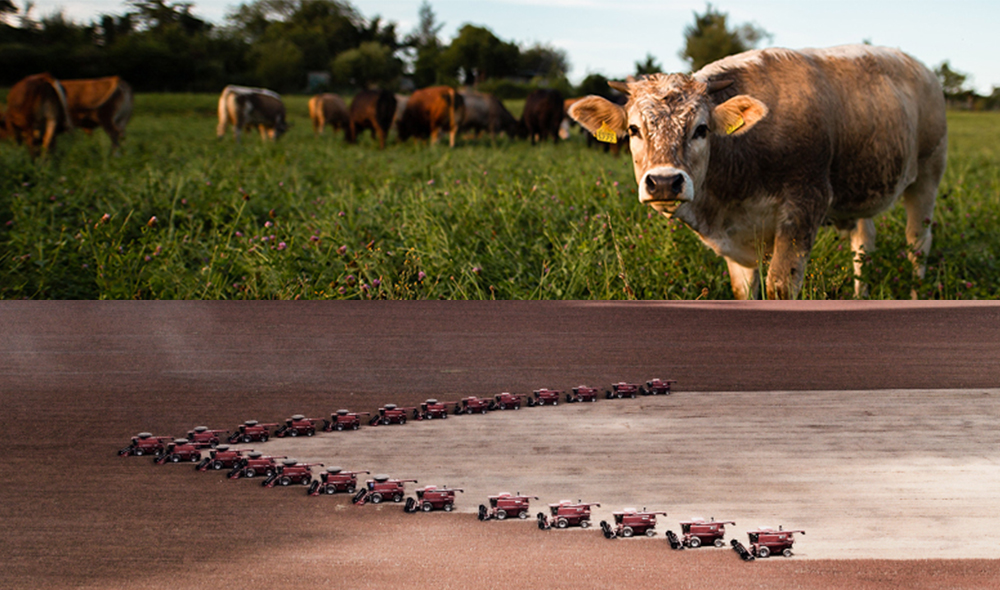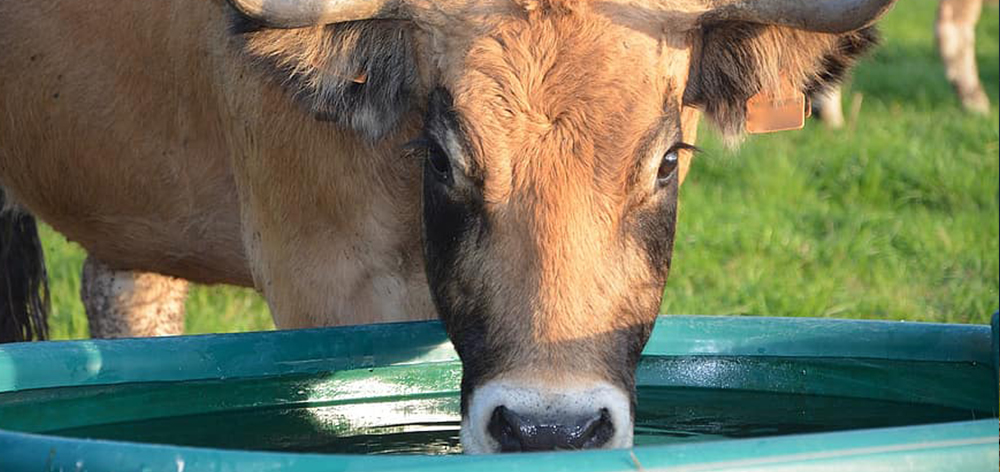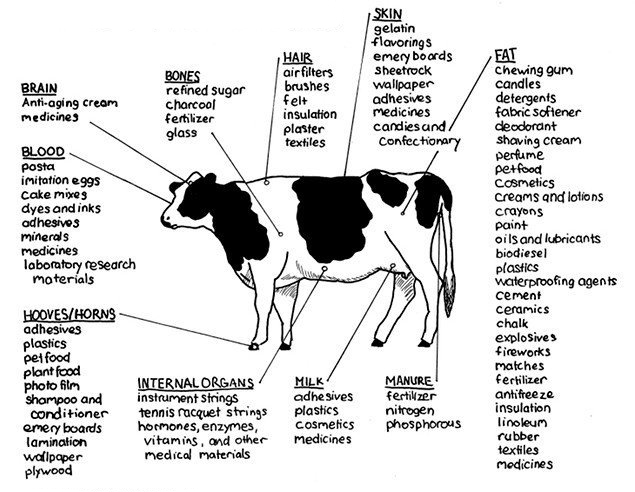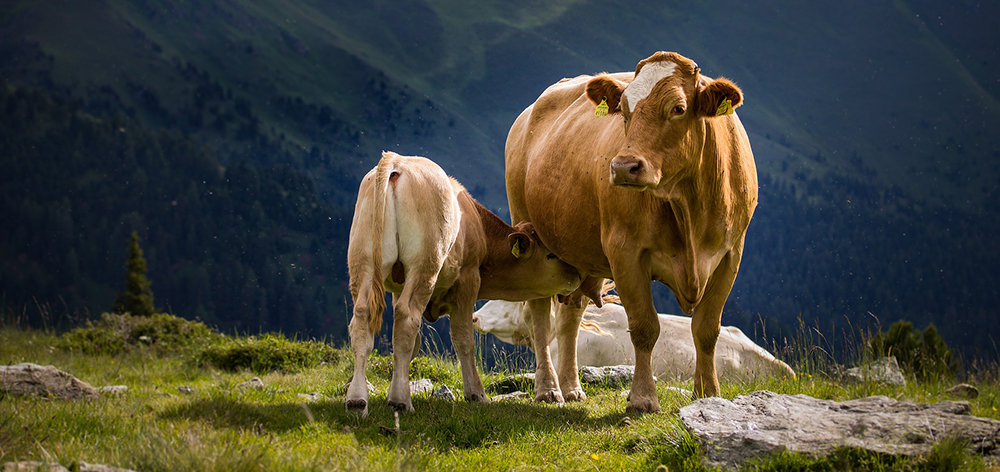4 Common Misconceptions about Real Meat Consumption vs. Fake Meat. Does it Really Stack Up?
As a farmer, you have most likely been confronted with anti-meat/anti-dairy speeches. However, industrial mono-crop agriculture used to create “fake meat” as an alternative source of meat protein harms the environment by degrading the soil, killing off microorganisms, allowing the topsoil to erode, causing flooding, releasing greenhouse gases, leaching chemicals into streams, rivers and eventually oceans.
Here are some of the most frequently encountered anti-meat arguments and how to respond to them.

It takes 100,000 litres of water to produce only 1 kilo of beef – it is 1000 times more than what is need to produce 1 kilo of wheat
This is probably one of the most repeated statistics used to argue against meat consumption. The shocking figure of 100,000 litres has been originally brought to the table by Dr. David Pimentel in his book Ecological Integrity: Integrating Environment, Conservation and Health. This figure has been deconstructed by many experts around the world.
For instance, Simon Fairlie (farmworker and editor of Britain’s prestigious Ecologist magazine) in his book Meat, A Benign Extravagance explains that Pimentel has considered the total life expectancy of a cow if it died a natural death while a typical beef steer is reared for 500 days (producing on average 125 kilos of meat at slaughter). But a beef drinks on average 50 litres of water per day, which leads to a figure of 200 litres per kilo or just 0.2% of Pimental’s value. By way of comparison, on average, a toilet flush corresponds to 12 litres, a shower to 60 litres and a washing machine to 100 litres.
In addition, this figure is based on the “water footprint”, which includes blue water (consumed by animals and crop irrigation), grey water (recycling of livestock effluents, i.e. organic waste) and green water (rainwater). The “water footprint” method is designed for industrial sites. It does not take into account the biological cycles, the water that returns to the earth, in plants, etc. It is therefore not directly applicable to agriculture and farming. The French National Institute for Agricultural Research (INRA) actually estimates that 95% of this water footprint due to farming activities corresponds to rainwater taken from the soil and consumed by plants. This quantity returns to the water cycle and would be consumed even if there were no livestock farming.

It takes 20 kg of grain to produce 1 kilo of beef – this feed could be used to feed humans instead
This figure is a variation of the distorted water statistic mentioned above. This statement is based on a (false) assumption that all farms across the world would raise livestock in feedlots. In New Zealand for instance, most of the cattle and sheep spend their entire life outdoor. In Europe, most of the farms leave their animals grazing outside and bring them inside in winter when the grass stops growing.
In general, livestock is fed with grass hay or grass silage, crops (maize or beets) and agricultural waste (straw). Grain isn’t the regular and basic diet of livestock, it is mostly used for ‘finishing/fattening’ animals prior to slaughter. In reality, this headline figure is only representative of the confined feedlot system, an industrial farming approach that most consumers reject anyway for reasons unrelated to feed efficiency (animal welfare, quality of the meat, etc). Moreover, the grain grade used for animal feed is not suitable for human consumption. Grain farmers rely on a market for animal feed to convert spoiled crops into cash. Stop eating meat would mean that a lot of grain would be wasted and human food grade would be rare, forcing up plant-based food prices. In reality, it is fair to say that livestock farming subsidises human grain production.
Plant-based proteins, also called “fake meat” are contributing to climate change while grass-fed cattle help reverse it. Grazing ruminant populations are essential for a healthy ecosystem and there are multiple benefits of keeping cattle on pasture, such as restoring soil microbial diversity, making the land more resilient to flooding and drought, grass trapping atmospheric carbon dioxide to help fight climate change, reducing fertilizer runoff polluting waterways, reducing pesticide use on conventional cropland…
Let not forget that livestock provides meat/protein for human consumption but also leather, wool, grease, blood and bones in substantial quantities which are used for a large number of industrial processes that we don’t even suspect, including making fertilisers for organic crop and plant farming. See below an example of products made from cattle.

Livestock accounts for 18% of all greenhouse gas emissions globally, ahead of the transport sector
This claim comes from the 2006 UN report called Livestock’s Long Shadow. The report states that the preponderance of greenhouse gas comes from deforestation to create new beef pasture or animal feed crops, meaning that most of the carbon emissions attributed to the beef are actually from the destruction of the carbon sinks (forests) that preceded them, rather than the ranching itself.
It is important to note that this activity is happening mostly in developing countries. On the contrary, most developed countries have seen increasing forest cover for many decades. In the US, researchers found that the American livestock industry contributes only by 2.8% to US greenhouse gas emissions, meaning that if every single US citizen gave up meat entirely, it would have a very limited impact on the country’s emission figures. Also, even if beef production ceased all of a sudden, the logging would still take place because humans still need wood and more space for croplands.
Depending on the farming system used, livestock husbandry can actually help to make the planet greener. In Ireland, researchers have identified the restoration of grasslands and pasture around the world as a priority with significant potential to mitigate global warming. Ploughing up grassland actually releases carbon from long-term soil stores, increases soil erosion, runoff, and nutrient depletion, so switching from livestock to arable farming isn’t the best solution to fight global warming.
Also, during the COVID-19 crisis, we saw that the drastic reduction of air, road and sea traffic had indeed had an effect on the reduction of greenhouse gas emissions. However, cows have not stopped existing and eating, which proves that agriculture is not as responsible for global warming as we are led to believe.

Compared to plant-based alternatives that are at least as nutritious and usually much healthier, the dairy industry is extremely harmful
Despite all stereotypes, in temperate climates, dairy farming is actually the most environmentally sound way to feed a population. This is explained in a paper published by a team of New Zealand researchers. Dairy farming provides protein in the form of milk all year round, not just at slaughter. The assumption that we could feed the world more efficiently with grains than animal products is based on meeting human energy requirements only, completely overlooking human protein needs.
In addition, in temperate climates, grains produce just one harvest per season and to avoid nutrient depletion and disease build-up they have to be rotated with other crops such as potatoes or oilseed rape.
To read more about the real cost of plant-based protein production and its impact on the land, the soil, and the planet earth as a whole, check out one of our last articles Is fake meat really as sustainable as it seems?
Here at Hustler, we believe in sustainable farming practices, in particular natural pasture grass-feeding, underpins our range of world-leading livestock feeding solutions. If you like what we do, join the movement to sustainable farming by subscribing to our #FeedGrassForGood newsletter on the link below to see future articles!


























